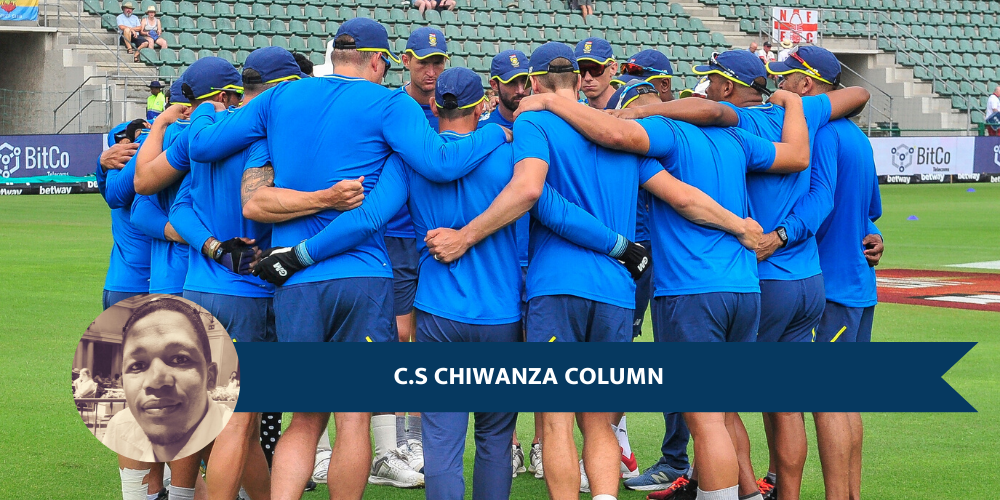The primary role of the coach is the development of team culture and the identification of the right strategies on and off the field that will take them forward, writes C.S Chiwanza.
One of my favourite sports movies of all time is the American football motion picture, Any Given Sunday.
The movie, which was ranked 24th by Rolling Stone magazine on their list of 30 Best Sports Movies of All Time, masterfully delivers on the legendary coach’s speech that rouses the team from apathy and manages to coalesce them when it matters the most.
Moments before a crucial match, Tony D’Amato gives an emotional speech to his fractured and underperforming team urging them to play as a united force. His talented but strong-willed and self-centred quarterback Willie Beamer, played by Jamie Foxx, takes this message to heart and thus begins the transformation from being an uncompetitive ragtag team to history makers.
It is an idea that is very seductive, the idea that a coach can rouse a team with oratory skills when it matters the most is so seductive that we tend to think of great coaches as those who can rally the troops with a speech when it matters.
After all, who doesn’t like the idea of a team rising from the dead to pull off what looks like an impossible feat? Who doesn’t want their team to pull off a miracle like the 438 Game?
Who wouldn’t want to have been a fly on the wall in the Proteas dressing room in order to hear what Mickey Arthur said to his men that afternoon? What magic words did he use to galvanize his troops to embark and succeed on the highest successful run-chase?
Nothing.
Mickey Arthur did not have an incredible speech, rant or monologue for his men at the innings break. No magical, inspirational and quotable talk that players would carry onto the field and always hold dear a cherished memory.
As it turns out it was Jacques Kallis who mentioned that the Australians were, “maybe 10 or 15 runs short off from a really competitive score.”
Granted, some coaches can share incredible speeches that galvanize players at breaks or intervals. Anyone who has ever listened to a good orator knows that.
But that’s not all it takes. It does help in certain cases. But that is not all it takes, because coaches are not magicians, they’re more like gardeners. That bit of watering and weeding they do the night before they pluck the fruits from tomato plants, for example, is not what will make that basket exceptional. Yes, it helps them to keep looking good and juicy, but all the work to make a good harvest was done in the months before that moment.
To borrow from the speech delivered by Tony D’Amato (Al Pacino) in Any Given Sunday, cricket is a game of inches. Ask any bowler, bowl an inch too full or an inch too wide or too short, and you are exposed to the batter’s wrath. An inch is the difference between a wicket and a six.
A coach also makes progress with the team an inch at a time. Building relationships with players, understanding them, getting them to understand him/her, building trust, and building a culture.
Culture has been the buzzword, the topic du jour in business, sports teams and even in families for the past 10 or so years now. While the definition of culture appears to be somewhat ephemeral, everyone agrees that it is culture that drives teams forward. The better the culture is, the better the team will perform.
As a result, when we want to identify the best culture, we look at the more successful teams. After-all, it stands to reason that high-flyers cannot have a bad culture in their ranks, right? Wrong.
What we, the outside world – the fans, match reporters et al – what we see on the pitch is strategy and not culture, because culture is a process, not an outcome. It is the way that members of a team interacts and does things, which is why we will be unable to pinpoint the aspects of that team’s culture that make it good.
A team with a bad culture, but with a good strategy can win and will win matches, and they will even carry that momentum of wins into a winning streak that can turn them into high-flyers. The same is true for a team with a good culture but with bad strategy, they can win matches and will win some, but they will also succumb to excruciating losing streaks.
However, long term success is not dependant on the momentum generated by winning streaks but relies on a combination of the two – a good team culture and a good strategy.
This is the primary role of the coach, the development of that culture and the identification of the right strategies on and off the field that will take teams forward.
However, in a time where celebrity coaches are slowly becoming the norm, as cricket takes the cue from other sports like soccer, people seek out coaches less and less, while seeking out magicians more and more. Coaches are supposed to magically turnaround teams into history makers overnight.
Before moving forward, let’s discuss the various cultural levels that are, and can be, dominant in teams.
In their book Tribal Leadership, Dave Logan and John King discuss and break down these stages into five levels.
Stage One: This is the life sucks stage, which means they believe that their team sucks and openly show it, and perform their roles in hostility and despair.
Stage Two: People in teams that are in this stage are passively antagonistic, and are quick to judge their teammates. They’re Debbie Downers, sacarstic and they have “seen it all”, so they know that it is really futile to try. They have no real innovation or urgency.
Stage Three: Stage is filled with team members who have the mindset that says to the rest of the team: “I’m great, and you are not.” In this stage, most will complain that the team is failing because they are doing all they can to elevate the team but lack support, or teammates are just not good enough, lack ambition and skill.
Stage Four: Teams in this stage believe that they are great, if they wore branded t-shirts, they would exclaim, in bright colours: “We are great!” The team has chemistry and operates as a unified force.
Stage Five: Team shirts and jackets of this team scream: “Life is great!” Teams in stage five are more than happy to be together, and they have the capacity to make history. They’re supportive of each other and are proud to be a part of this collective.
Logan and King suggest that teams in stages four and five bounce back and forth between the two stages, and this is where Tier One teams operate, culturally.
These stages of team culture do not mean that the teams operating at stage four or five are invincible, no matter what, but that even in defeat, they emerge stronger and more cohesive. Neither does it mean that stage one or stage two teams never win.
However, consistency is more certain when teams function at a certain cultural level, just as much as a team operating at a lower level is prone to more erratic results that seem to have no definite pattern.
Now, as teams decline in performance, so does the team culture, it begins to deteriorate. Team spirit takes a nosedive. Anyone who witnessed the Proteas losing the home Test series to Sri Lanka could easily tell that the squad was now in stage three and at some moments seemed to be going into stage two.
In this world of celebrity, superstar coaches, a coach is expected to transform a team stuck in stage three or two into a stage four or five team, overnight.
Coaches are expected to dramatically turn teams into history makers at a click of a finger. This is what Tony manages with his famous speech in Any Given Sunday. They must hit the ground running, otherwise, they’re not good enough. And one of the popular schools of thought suggests that if one has a team of talented individuals then coaching them and achieving the desired results should be easy.
Needless to say, this is not so.
For coaching to be effective, it requires a combination of a strong culture and good strategies, and for these two to be possible it requires clear and concise communication, which requires the presence of trust and trust requires that the involved parties have good relationships between them. All this take time and effort.
Disclaimer: Cricket Fanatics Magazine encourages freedom of speech and the expression of diverse views from fans. The views of this article published on cricketfanaticsmag.com are therefore the writer’s own and do not necessarily represent the views of the Cricket Fanatics Magazine team.











